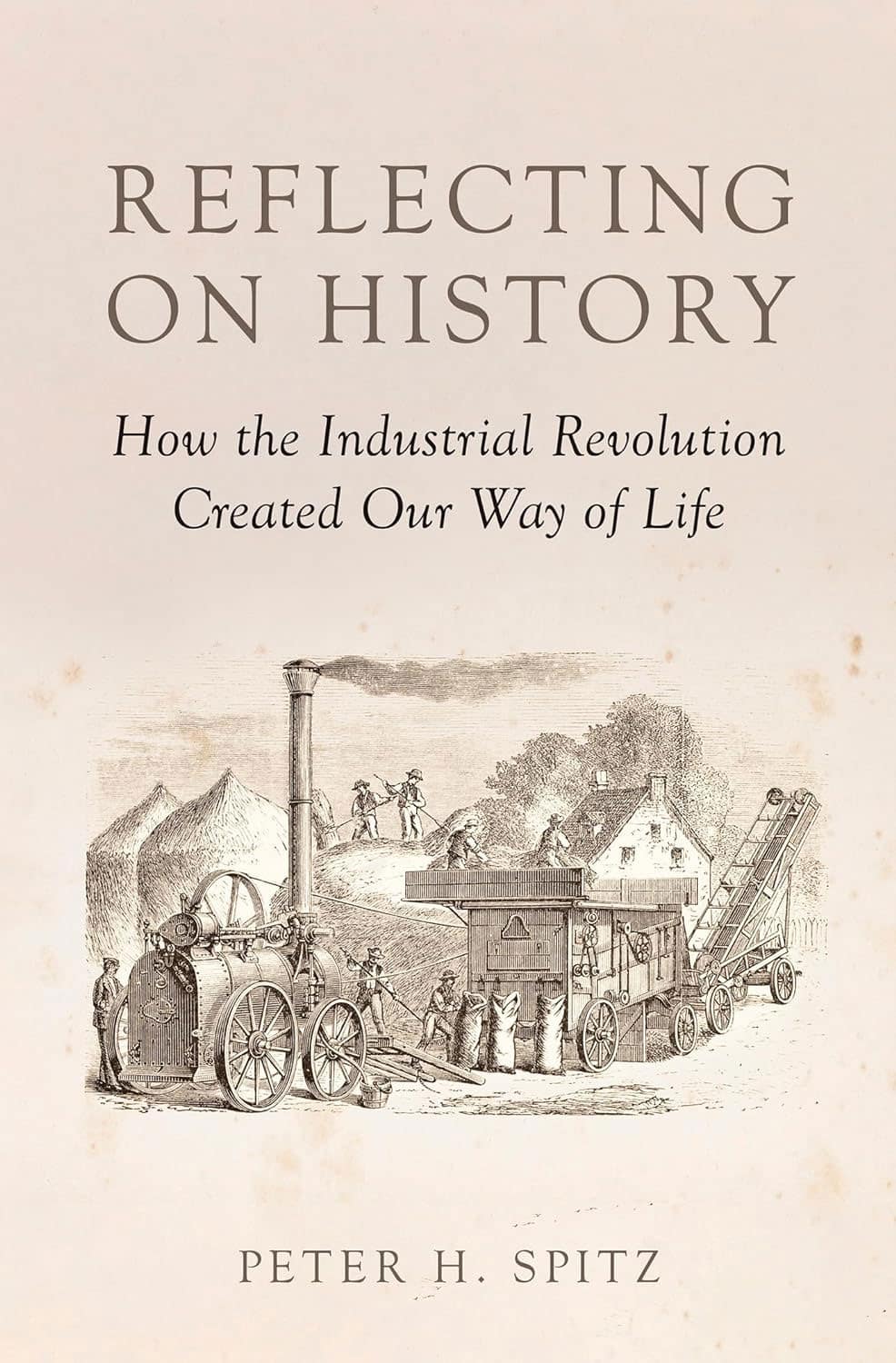The Industrial Revolution — when machinery and manufacturing took over from creating by hand — took place centuries ago (about 1760 to 1840). Since then we’ve undergone a radical transformation transition from analog to digital, to say the least. But there are huge correlations between that profound shift and what came later with the rise of digital technology and AI. That’s made clear in Reflecting on History: How the Industrial Revolution Created Our Way of Life, an entertaining, fact-filled book by inventor and entrepreneur Peter H. Spitz.
Spitz takes readers on a lively journey to the places where some of the most ground-breaking inventions originated — from plate glass to rubber to the computer to antibiotics — and brings moments of human persistence, discovery and struggle to life. We learn about the business partnerships that gave a nearly overlooked invention a boost, the try, try and try again methodology that kept inventors toiling away in their labs and garrets. In a sense, this is a book celebrating a more innocent time — when inventions were the province of inventors, not corporate R&D programs, and when ingenuity and hunches were more a part of discovery than hard data. But he’s not sentimentalizing the old school here. Progress is inevitable and so is change, he seems to say, and we’re all the better for embracing it.
The book argues, too, that our modern civilization would not have happened without people taking tremendous risks, thinking out of the box, and recognizing the value of an accident. Whether they won the Nobel Prize or became just a name in a long list of those credited, they went through the same process. Witness Spitz’s account of the origins of the microwave oven: a company engineer working with radar realized that “the microwaves from an active radar set were melting a candy bar he had in his pocket. He thought about that and wondered whether he could duplicate the effect. A few days later he had an idea. Sure enough, an experiment with an egg that exploded proved the concept of using microwaves to heat food.”

In this age of instant information and noise, it’s hard to imagine just taking a pause to think about something and ponder its implications in quite the same way. But the true stories in this compact, accessible volume are a heartening reminder that this is part of the human process: to investigate, to wonder — to have those Ah-hah moments — and that’s how we got to where we are today.
All in all, there are 25 remarkable inventions chronicled — from the television to Post-Its to thermoplastics to robots, and each has the arc of a good story with characters, and places, that Spitz brings to life. For anyone who dreams of inventing the next big thing, young or old, this is going to be a fun and inspiring read. And in the spirit of discovery, the author suggests that readers take a trip to another center of innovation, the public library to learn more. Talk about a thru-line: libraries have been a part of humankind for at least five thousand years.
Have you read?
Countries: Women in the workforce. Countries: Personal space. World’s Most (And Least) Religious Countries. Best Countries to Invest In Travel, Tourism, and Hospitality. Most Forested Countries In The World.
Add CEOWORLD magazine to your Google News feed.
Follow CEOWORLD magazine headlines on: Google News, LinkedIn, Twitter, and Facebook.
Copyright 2024 The CEOWORLD magazine. All rights reserved. This material (and any extract from it) must not be copied, redistributed or placed on any website, without CEOWORLD magazine’ prior written consent. For media queries, please contact: info@ceoworld.biz
